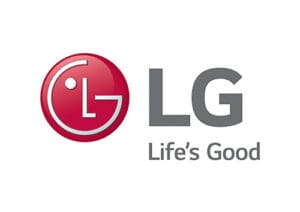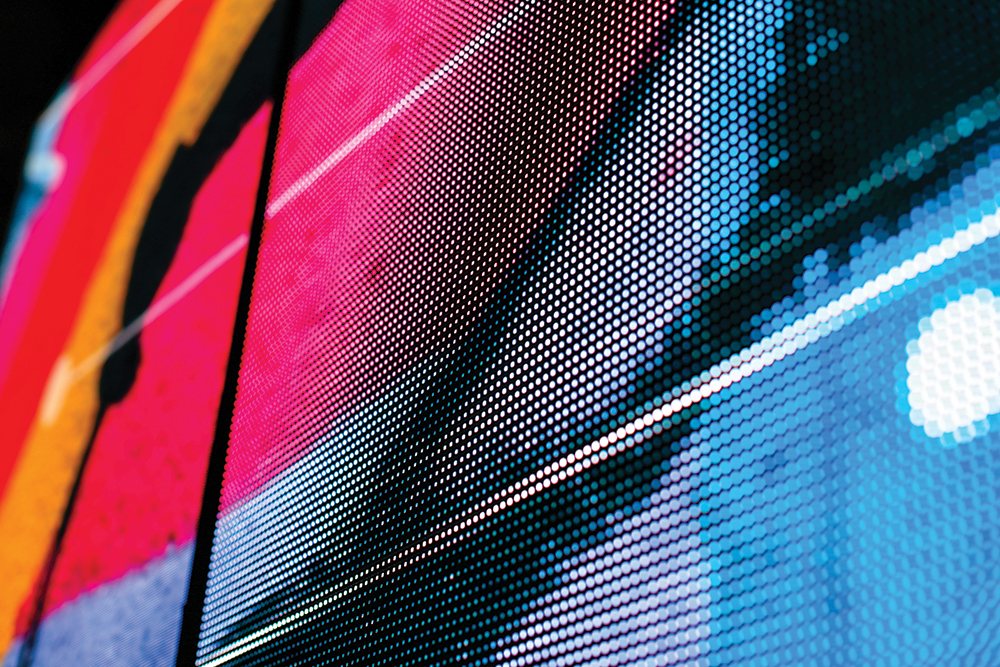For those among us who don’t have our heads buried in the proverbial sand, we recognize direct-view LED (DVLED) displays are one of the hottest topics in commercial AV (and digital signage). We’re seeing double-digital growth in technology acceptance and integration in both indoor and outdoor applications. As I like to say (or, in my case, preach), when technology, applications and prices converge, opportunities are created. And, in DVLED, they are being created daily.
The benefits of DVLED are front and center for all to see. It is seamless and nearly limitless in size and shape; what’s more, DVLED produces colorful, high-contrast images with brightness levels to suit high-ambient-light environments. What’s not to love? Count me as a big fan!
But, in the process of “fandom,” there remains a lot to learn. Think about an iceberg, where the unknown two-thirds of it is beneath the surface, unseen. What we don’t know can come back to haunt us. Please permit me to explain.
DVLED is Different
Most of us are, at some level, experts in projection and traditional flatpanel LCD displays. With decades of expertise in mainstream displays, we are comfortable with what we know. This is admittedly oversimplified, but projection is all about screen size, lumen output and ambient light. For LCD flatpanels, it’s about fixed image size, ambient light and duty cycle. The decision-making variables are well known, and we are accustomed to working with them. As DVLED comes into more and more prominence, we must break out of our paradigms and realize that it’s quite different.
Let me begin with the manufacturers. With projection and flatpanel LCD displays, we know the major players. They have been clearly defined for us over many years. With DVLED, we don’t have that history and experience, as we do elsewhere. There are currently around 2,000 companies that claim to be manufacturers of DVLED.
But is that really true? Well…yes and no. It depends on the definition of “manufacturer.” Research shows that most of these companies are assemblers, buying components from others and then integrating them into a finished product. But even if we put those aside for a moment, it leaves an enormous number of true DVLED manufacturers.
Currently, there are more than 100 DVLED companies attempting to do business in the U.S. Suffice it to say, this has injected substantial confusion as to whom to buy from and, more importantly, whom to trust. File this under “caveat emptor.”
Some of the major players in projection and flatpanel LCD displays have entered the DVLED market under their own brand names. This is certainly a place to start. Keep in mind that there is a lot of OEM business out there. Companies (mainly out of China) are manufacturing for known brands selling in the U.S. Before you ask, I cannot report who manufactures for whom, but I do know that this is a fact of life in the market. And beyond the confusion among manufacturers — who does what and whom to buy from — there is more to consider. As noted, DVLED is different. And how it is different falls under a “need to know” set of parameters. Perhaps it’s time to get acquainted!
Different Technology, Different Manufacturing
First, the technology and the manufacturing for DVLED are different from those for LCD displays or digital imager chips for projection. A light-emitting diode (LED) is a semiconductor device that emits light when a voltage is applied to it. Electrons in the semiconductor recombine with electron holes, releasing energy in the form of photons (light). Properly defined, this is electroluminescence, in which the material emits light in response to an electric current. Discrete LEDs are “placed” on a circuit board in groups of three or four red, green and blue subpixels to create the full color spectrum and images we see. Among manufacturers, there are significant process differences in how a DVLED display is built. Think R&D and quality control.
Speaking of quality, the differences can be substantial. Many think that an LED is an LED, but that is only partly true. The core concept of how they work (electroluminescence) is common to all, but LEDs come from a few suppliers (four to six are the best known) and at various quality levels. Think “good, better, best” from a given supplier. The common differences in LED “grades” lie in brightness, color accuracy and lifetime. The LED is not the only difference in quality, either. The way the circuit boards are manufactured, as well as the ancillary components, vary in quality. Gold wire is at the top, followed by copper, etc.
Related: LG on its DVLED Display Products
DVLED display performance can vary widely among manufacturers. The quality of the LEDs and components they use drive these performance differences, as do manufacturing processes and quality-control considerations. The differences we see on the surface lie in brightness, contrast, color saturation and uniformity.
It may appear at first glance that display applications are similar, but the decision of which display to use is driven (or, at least, should be driven) by the application and the environment. LED expands on the available choices. If a project calls for a fixed screen up to 100 inches diagonal, then (in most cases) LCD has become the most logical choice. If the application is for larger screens, then the decision choices are as follows: projection, videowalls composed of LCD displays or, finally, DVLED.
DVLED shines (pun intended) by being seamless, with high brightness, high contrast and vivid color saturation, but it comes at a premium price. Don’t be blinded; one size (or type) does not fit all.
Different Systems Design
The systems design for DVLED is different. This is a natural extension of DVLED’s variability: indoor versus outdoor, straight versus curved, nontraditional aspect ratios and shapes, and even transparent options. Perhaps the biggest design consideration, however, lies in the choice of pixel pitch, or the distance between pixels.
You might be asking yourself, “Why?” Well, it’s because, depending on the pixel pitch between discrete LEDs, you might be able see the individual pixels when viewing the display. Unlike the fixed resolution that we see with projection and LCD flatpanels, there is a wide variety of choices within DVLED. Pixel pitches range from (approximately) 0.5mm to over 20mm. Whether a viewer sees pixels is dependent upon the viewing distance.
Related: Digital Signage and Videowalls: Trends and Market Developments
From a budgetary perspective, the tighter the pixel pitch, the higher the price. For most of us, the “sweet spot” is where the viewer does not see pixels from their expected viewing position. Thus, a key element of system design is to match the pixel pitch with the viewing distance.
The installation is different, as well. LED displays are typically composed of building blocks called cabinets. The LED modules are then installed on the face of the cabinets. Unlike LCD flatpanels, with their VESA mounts, and unlike projectors, with their universal mounts, DVLED displays are not standard. They are not universal in size, shape or weight. Thus, they require a custom mount. In addition to the mounting method, there is the size, weight and location to consider. As with an LCD videowall, the wall or ceiling structure must be sufficiently robust to accommodate the display. There are also differences in wiring. Some displays are simply daisy-chained between the cabinets and panels, whereas others feature a wireless design.
The manner of display servicing is also different. Depending upon the installation type and location, service may come from the front of the display or from the back — or, in some cases, both. It is a matter of accessibility. In addition to all the other differences, in some cases (especially outdoors), the installation may require adherence to local codes, which might include having a certified sign installer do the installation.
Assessing Our Level of Risk
As you can imagine, with so many DVLED manufacturers and so many differences, the performance, lifetime, prices and, frankly, risks are very different. With flatpanel LCD displays and projectors, what you see is what you get; it’s relatively easy to compare specifications and prices. A 4K flatpanel or an 8,000-lumen projector defines what they are, what they do and what to expect regarding performance and price. Are there differences? Of course! But there is an established (and agreed upon) level of quality from the major suppliers in each category.
We do not have this level of knowledge and experience when it comes to DVLED. Knowing the differences in what we know, and what we don’t know, about each display technology type is key to our level of risk. In DVLED, separating the good from the bad is job one. The biggest concerns should be quality, performance and serviceability, but price is right up there at the top, too. The price challenge: Spend no more than you need to, but no less than you should. The overall “sweet spot” is where you want to end up.
My advice? If you do not know DVLED, work with someone who does!
This article is brought to you with the support of LG. 










